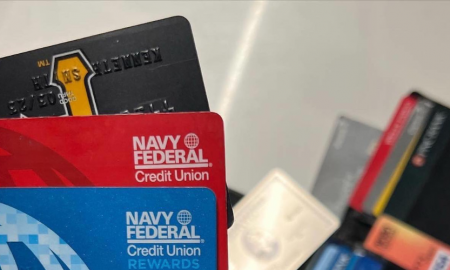
How to Quit a Job Without Burning Bridges?

So, it’s time to say goodbye. Maybe you’ve landed your dream job, or perhaps you’re embarking on a new adventure. Whatever the reason, how to quit a job gracefully and professionally is an important question. After all, you never know when your paths might cross with former colleagues again.
Here’s a roadmap to navigate this transition smoothly, leaving a positive and lasting impression.
Expert Tips on How to Quit a Job Smoothly
1. Making the Decision to Quit

Freepik | Before resigning, it’s vital to carefully decide by considering the pros and cons of leaving your current role.
Before diving headfirst into resignation letters, take a moment to reflect. Is this truly the right time to quit your job? Consider these factors:
- Pros and Cons: Weigh the good, the bad, and the potential for growth in your current role. Could a conversation with your manager address some of your concerns?
- New Opportunities: If you have a promising job offer in hand, congratulations! But ensure it aligns with your long-term goals before making the leap.
- The Unknown: Leaving a steady paycheck can be nerve-wracking. Do you have a financial safety net in place, or a plan for your job search during the interim?
Once you’ve carefully considered these aspects, you can move forward with confidence.
2. Giving Notice: The Two-Week Rule (and Beyond)
Traditionally, the golden standard for quitting a job is providing two weeks’ notice. This allows for a smooth handover and ensures your colleagues have time to adjust. However, check your employment contract to see if a specific notice period is stipulated.
Here’s a tip: Even if you’re not obligated to give a two-week notice, consider doing so as a courtesy. It demonstrates professionalism and respect for your employer.
3. Crafting a Resignation Letter

Freepik | EyeEm | When drafting the letter, identify the appropriate recipient, such as your direct supervisor or human resources manager.
A concise resignation letter formally conveys your decision to leave. When drafting the letter, identify the appropriate recipient, such as your direct supervisor or human resources manager.
Here are some key elements to incorporate:
- A clear statement of resignation
- The effective date of your last day
- A brief explanation for your departure (optional)
- An expression of gratitude
- Your signature
4. The Exit Interview
Some companies conduct exit interviews as part of the quitting a job process. This is your chance to provide constructive feedback about your experience.
Here are some pointers:
- Be honest, but professional: Focus on providing actionable feedback that can help the company improve.
- Avoid negativity or gossip: Maintain a professional tone, even if you have had challenges.
- Express appreciation: Thank the interviewer for their time and for the opportunity to share your thoughts.
5. Schedule a Face-to-Face Meeting
While an email can suffice, consider a face-to-face meeting with your supervisor or HR. This personal touch allows you to express gratitude and collaborate on a handover plan for ongoing projects. It demonstrates good etiquette, but isn’t mandatory. If you have a strained relationship with your manager, initiate the conversation with HR. Regardless of how you inform colleagues, draft a formal resignation letter for a smooth exit process.
6. Wrapping Up and Transitioning Work
After resigning, you’ll typically have two weeks to finalize tasks. Focus on completing projects and work with your supervisor to assign ownership of unfinished tasks. Documenting your daily tasks, file locations, and equipment procedures ensures a smooth transition for your replacement.
In rare cases, if your new employer is a competitor, your current company might request immediate departure and equipment return to prevent confidential data sharing. Otherwise, you’ll likely keep your equipment and work until your last day.
7. Expressing Gratitude
Some jobs provide more than a paycheck; they foster professional growth, meaningful connections, and the development of valuable skills. Depending on your tenure with the company, you might have established strong bonds with colleagues and leaders.
Take time to thank those who affected your experience, not as a gesture of courtesy, but also to cultivate your professional network. These connections could prove valuable in the future, as you may have opportunities to assist former colleagues and vice versa.
8. Leaving a Positive Impression

Freepik | Exiting a job positively boosts professionalism, reputation, and future opportunities.
Departing from a job on a positive note is helpful for several reasons. It demonstrates professionalism, strengthens your reputation within the industry, and maintains bridges that could lead to future collaborations or recommendations. Here are some extra tips to ensure a positive exit:
- Maintain a positive attitude: Even if you’re excited about your new opportunity or relieved to be leaving, professionalism requires maintaining a positive and helpful demeanor throughout your remaining time at the company.
- Assist with the transition: Collaborate with your supervisor and colleagues to ensure a smooth handover of your responsibilities. Offer to train your replacement and provide any necessary documentation to minimize disruption.
- Return all company property: Ensure you return any company-issued equipment, such as laptops, phones, and access cards, on your last day.
- Maintain professional boundaries: While it’s appropriate to stay connected with former colleagues on a professional networking level, avoid gossiping or bad-mouthing the company after your departure.
Moving Forward
Resigning from a job can be a bittersweet experience. By following these guide on how to quit a job and prioritizing professionalism throughout the process, you can ensure a smooth transition, preserve positive relationships, and leave a lasting positive impression. This will position you well as you embark on your next career chapter.
More in Career
-
Labor Shortage in Different Industries: The Aftermath of the Pandemic
In the wake of the pandemic, the U.S. job market has been a study in contrasts. While some industries have adeptly...
December 14, 2023 -
Brad Pitt’s Plan B Production Sold to Mediawan
In a world where the global economy is uncertain, one industry remains steadfast and prosperous—the celebrity-entertainment industrial complex. A new trend...
December 12, 2023 -
Ashton Kutcher’s Lucrative Business Ventures
Ashton Kutcher, a name that resonates with the silver screen’s allure, has emerged as a master of diverse talents, not confined...
December 8, 2023 -
Why American Consumers Are Falling Behind on COVID-Era Debt
When the world was grappling with the health crisis brought on by COVID-19, the U.S. economy faced an equally formidable challenge:...
November 27, 2023 -
Dr Dre and Ex-Wife Nicole Young Finalise $100m Divorce Settlement
After months of legal proceedings, Dr Dre, the legendary rapper, producer, and businessman, officially brought his tumultuous divorce from ex-wife Nicole...
November 22, 2023 -
5 Tell-Tale Signs That It Is Time to Say Goodbye to Your Current Job
Are you feeling like your job is more like a ball and chain than a fulfilling career? The daily grind, the...
November 19, 2023 -
WWE Signs $1.4 Billion Broadcasting Contract for SmackDown
In an explosive turn of events, World Wrestling Entertainment (WWE) has just unleashed some earth-shattering news for its legions of fans....
November 9, 2023 -
Navigating the Mortgage Maze as Interest Rates Take a Historic Leap
The U.S. housing market is nothing short of a dynamic entity. It evolves, reacts, and sometimes, just like the current real-estate...
November 3, 2023 -
Celebrity Couples Where the Woman Has a Higher Net Worth
In a world where gender roles and financial dynamics constantly shift, it’s not unusual to find celebrity couples where the woman...
October 27, 2023















You must be logged in to post a comment Login